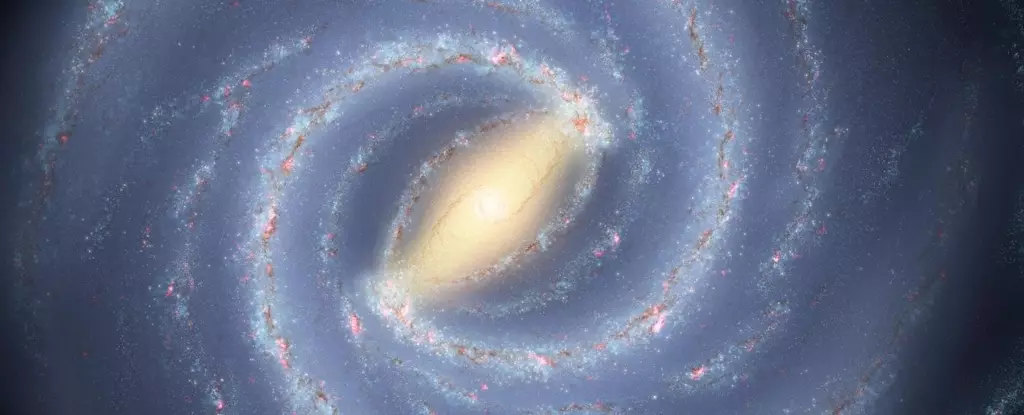Galaxies have always fascinated astronomers due to their wide variety of shapes and sizes. One type of galaxy that has intrigued scientists for years is the spiral galaxy, such as our own Milky Way. However, it has been found that spiral galaxies are surprisingly rare in our galactic neighborhood, raising questions about their formation and existence. Recent research conducted using a supercomputer has shed light on this mystery by simulating the evolution of our galactic neighborhood over billions of years. The findings reveal a turbulent past filled with collisions and mergers.
The researchers utilized a supercomputer to turn back time to approximately 13.8 billion years ago when galaxies in our cosmic vicinity were just beginning to form. By simulating the evolution of our galactic neighborhood, they aimed to understand why spiral galaxies are so rare in our corner of the cosmos. The results of the simulation unveiled a tumultuous history characterized by frequent collisions and mergers among galaxies.
One significant outcome of galaxy mergers is the formation of new types of galaxies. For instance, when two spiral galaxies collide, it is believed to result in the creation of elliptical galaxies. Observations of our nearby universe, as well as the simulations, confirm this phenomenon. It appears that our galactic neighborhood is abundant in elliptical galaxies but lacks a proportional number of spiral galaxies. This suggests that the Milky Way somehow managed to survive amidst a chaotic scenario akin to galactic bumper cars throughout the age of the universe.
The research findings provide a glimpse into the formation of galaxies and highlight the transformation of spirals into ellipticals through galaxy mergers. Despite a turbulent history of collisions and mergers, the Milky Way has managed to retain its spiral structure. This raises intriguing questions about the factors that allowed our galaxy to survive and maintain its distinct shape. Further investigations will be necessary to uncover the specific mechanisms at play.
The study’s findings have broader implications for our understanding of galaxy formation and evolution. They suggest that the rarity of spiral galaxies in our galactic neighborhood may be attributed to the prevalence of collisions and mergers. This provides valuable insights into the processes that shape the structures and characteristics of galaxies over time. By examining the conditions that allowed the Milky Way to resist transformation into an elliptical galaxy, researchers can gain a deeper understanding of the underlying physical mechanisms driving galactic evolution.
The mystery of rare spiral galaxies in our galactic neighborhood has puzzled astronomers for decades. With the help of advanced simulations conducted on a supercomputer, researchers have gained new insights into the factors contributing to this rarity. The turbulent history of frequent collisions and mergers among galaxies has played a significant role in shaping our galactic neighborhood. The survival of the Milky Way amidst this chaotic environment raises intriguing questions about the mechanisms that allow certain galaxies to maintain their spiral structure. This study not only enhances our understanding of galaxy formation and evolution but also paves the way for further investigations into the mysteries of the cosmos.


Leave a Reply